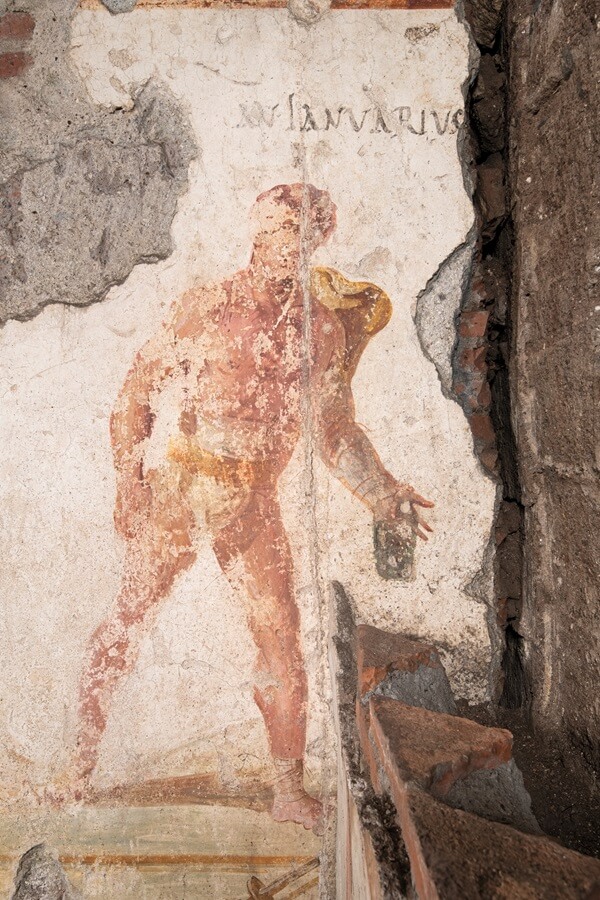After almost half a century of restoration efforts, the Domus Tiberiana, the first imperial palace built on the Palatine Hill, reopens to visitors.
The Domus Tiberiana is now open to the public after nearly 50 years. Visitors who wish to explore more of Rome’s archaeological treasures can now follow the ancient path that the emperor and his court used to reach the private residence on the Palatine Hill, which gave rise to the modern word palazzo. The opening of the Domus Tiberiana restores the pathways between the Roman Forum and the Palatine Hill, via the Domitian Ramp and the Farnese Gardens.
The museum exhibition held inside of the Domus Tiberiana, called Imago Imperii, was curated by Alfonsina Russo, Maria Grazia Filetici, Martina Almonte, and Fulvio Coletti, and organized by Electa. It is divided into thirteen rooms, with the purpose to narrate the history of the monument across the centuries.
INSPIRATION
Visit the Archeological Park of Rome: Book a skip-the-line Tour

This marks another significant step towards the full enjoyment of Rome’s central archaeological area, the largest in the world within an extraordinary urban context, explains Alfonsina Russo, the director of the Colosseum Archaeological Park. Thanks to the efforts of the Colosseum Archaeological Park and the resources invested in the site’s enhancement, citizens and visitors from around the world can now relish an environment that reopens to the public after nearly half a century of closure.
The name Domus Tiberiana hails back to Emperor Tiberius, who led the empire after the death of Augustus. However, archaeological investigations reveal that the foundations of the palace were laid by Nero after the fire of 64 AD, concurrently with the construction of the Domus Aurea. Subsequent modifications by Emperors Domitian and Hadrian further expanded the residence, which continued to thrive into late antiquity, experiencing a renaissance after a period of abandonment. In the mid-sixteenth century, the Farnese family incorporated it into their gardens. It was the archaeologist Pietro Rosa who first opened the Domus Tiberiana to the public, coinciding with the creation of the first Palatine Museum.
While in the 8th century AD the Domus Tiberiana was so well-preserved that Pope John VII chose it as his residence and restored it for his use, by the 10th century the palace had been entirely abandoned, and its materials plundered and used for making lime. It wasn’t until the late 15th century that significant excavation work began on the Via Sacra and the Via Nova, on the northern slopes of the Palatine Hill.


Visiting the Domus Tiberiana, you’ll venture into the heart of the imperial palace, passing through the arches of the service quarter. The view of the Roman Forum from the seven exhibition rooms is truly priceless. Two multimedia rooms offer a documentary and a holographic reconstruction of the monument. Additionally, a tactile path guides visitors through the experience. You’ll admire the newly restored architectural marvels, the facilities, including the imperial baths, and the stucco decorations that adorn the so-called Bridge of Caligula.
The exhibit showcases a treasure trove of artefacts, including ceramics, glass, metal, coins, and sumptuous furnishings that narrate the life within the palace, the economic transactions and the mysterious cults practiced in the palace, from Dionysus and Mithras to Isis and Serapis. As you wander through the spaces, you’ll get a glimpse into life during the Domitianic period (late 1st century AD) and the Farnese era (16th-17th centuries). A long phase of abandonment is represented by a 5th-century rubbish dump, which has yielded remarkable artefacts linked to the consumption of precious goods sourced from across the Mediterranean, along with various animal remains.

Adding to the experience are the remarkable fragments of terracotta statues unearthed in the excavations on the northern slope of the Domus Tiberiana. These are copies of original Greek sculptures from the classical era or Roman reinterpretations, all produced in a single workshop. In the mason’s studio, you’ll come across red African marble from the island of Theos in Greece, as well as Phrygian breccia, serpentinite, and coral breccia.
Among the treasures housed within the Domus Tiberiana, you shouldn’t miss the statue of a comic actor dressed as Papposilenus, the weights integrated into the reconstruction of an ancient loom, two outspread wings likely from the Augustan era or early Julio-Claudian period, belonging to two statues of the goddess Victoria depicted about to descend to the earth, and a beautiful statue of Pan, the god of pastures and woods.
The torso, recovered from the Park’s deposits, and the head, recently repatriated from the USA thanks to an operation by the Carabinieri Command for the Protection of Cultural Heritage, are connected to sculptures that once adorned these places during the imperial and Farnese eras.
Roman Forum and Palatine Hill
Hour:
until 30 September: 9am – 7pm
from 1 to 28 October: 9am – 6:30pm
from 29 october to 31 December: 9am – 4:30pm
Tickets:
Full €16, Reduced €2





